Witches, VR and Wine: Exploring the Wonders of Savičenta, Istria
When a certain place has you sidetracked several times on the way to a wine festival, you know you have something special on your hands. A recap of an afternoon spent exploring the charming Savičenta in central Istria
What do you do when the forecast calls for a sunny weekend in October? A road trip, of course. We headed to Istria for a day and decided to stop in Svetvinčenat, a town in the south central part of the region.
Named after Saint Vincent, the town is more often referred to as Savičenta by the local population, and is also called San Vicenti in Italian. I prefer the local name myself, and in the interest of making everyone's lives easier, will be using it in this article.
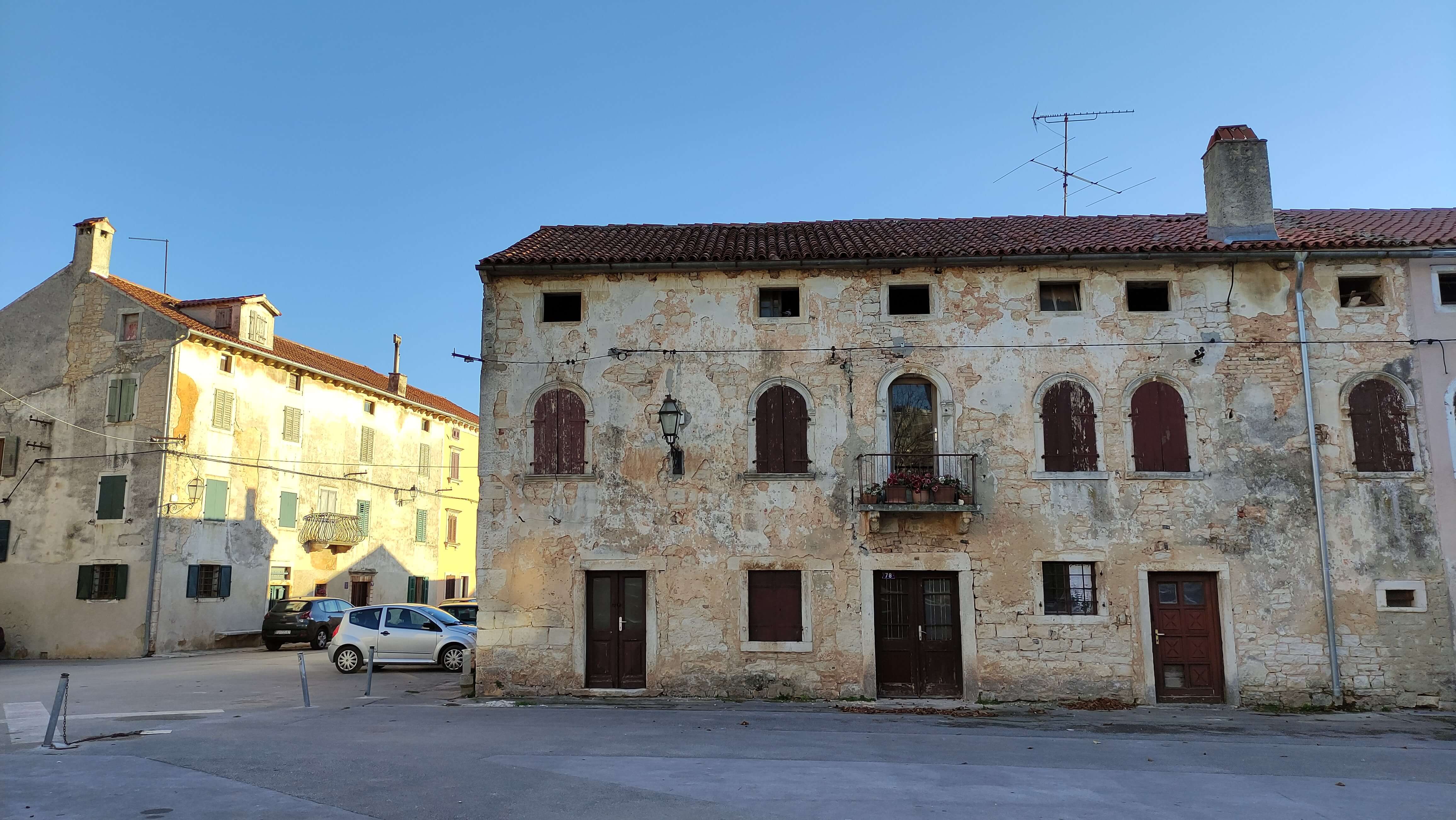
There’s a lot to see and do in this quaint little town - and we’ll get to that in a bit - but the main reason for our trip this time was the Young Wine Festival that took place on Saturday, October 23rd.
It’s a tradition for winemakers and wine lovers alike to gather in Svetvinčenat this time of year to present and taste the first wines of the season. While the custom has been around for over 40 years, the event has officially been taking place for 15 years and is known to assemble winemakers from all parts of the Istrian peninsula.
This year’s festivities kicked off with a cycling race in the early afternoon, and the wine festival was to start at 5PM and last well into the evening. We arrived a few hours early, but not being especially apt at cycling, decided to skip the recreational part of the event and take in the local sights instead. We had no idea what wonders lay within the castle walls.
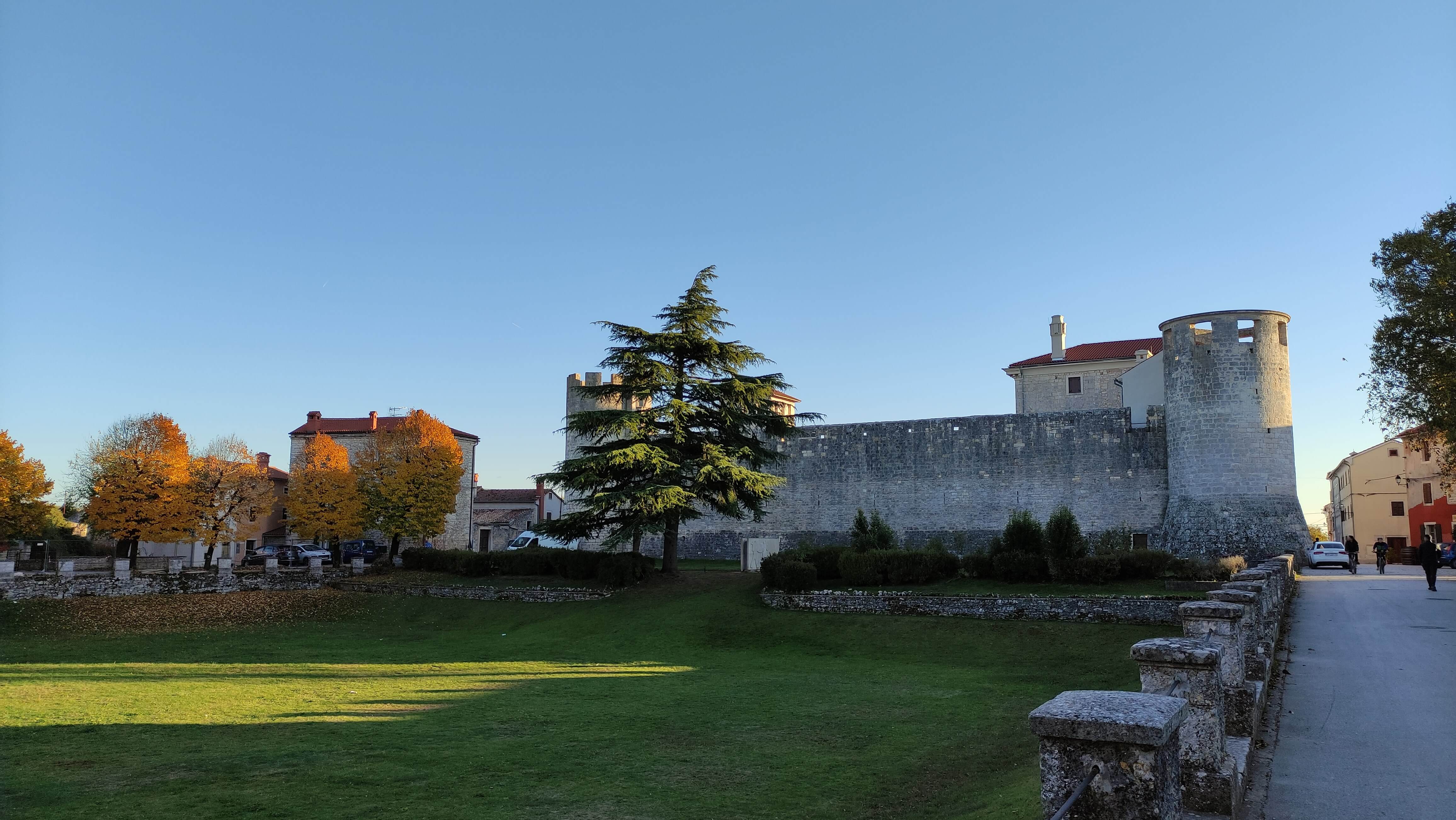
Even though its origins date much further back in history, Svetvinčenat is mostly known as a Renaissance gem. Its picturesque landscape is dominated by the gorgeous Morosini-Grimani castle and the parish Church of the Annunciation overlooking the large public square.
The Morosini Grimani castle is the biggest edifice in Svetvinčenat and one of the best preserved castles in Istria. The estate changed hands several times throughout history and owes its name to two noble families that had the biggest impact on the town’s development in the early Modern Era.
This stunning historical monument has been through a lot in its lifetime: it was pillaged, conquered, burned down repeatedly, and left on a brink of collapse after World War II. In the last two decades, however, it has undergone a thorough restoration that was completed last year and is nowadays abuzz with visitors.
The main attraction beyond the solemn fortification walls? I’m sure everyone’s heard of and possibly even took part in a few escape room games. Well, Escape Castle Svetvinčenat takes that up a notch with a variation of the classic puzzle game that is played all over the castle instead of a single room.
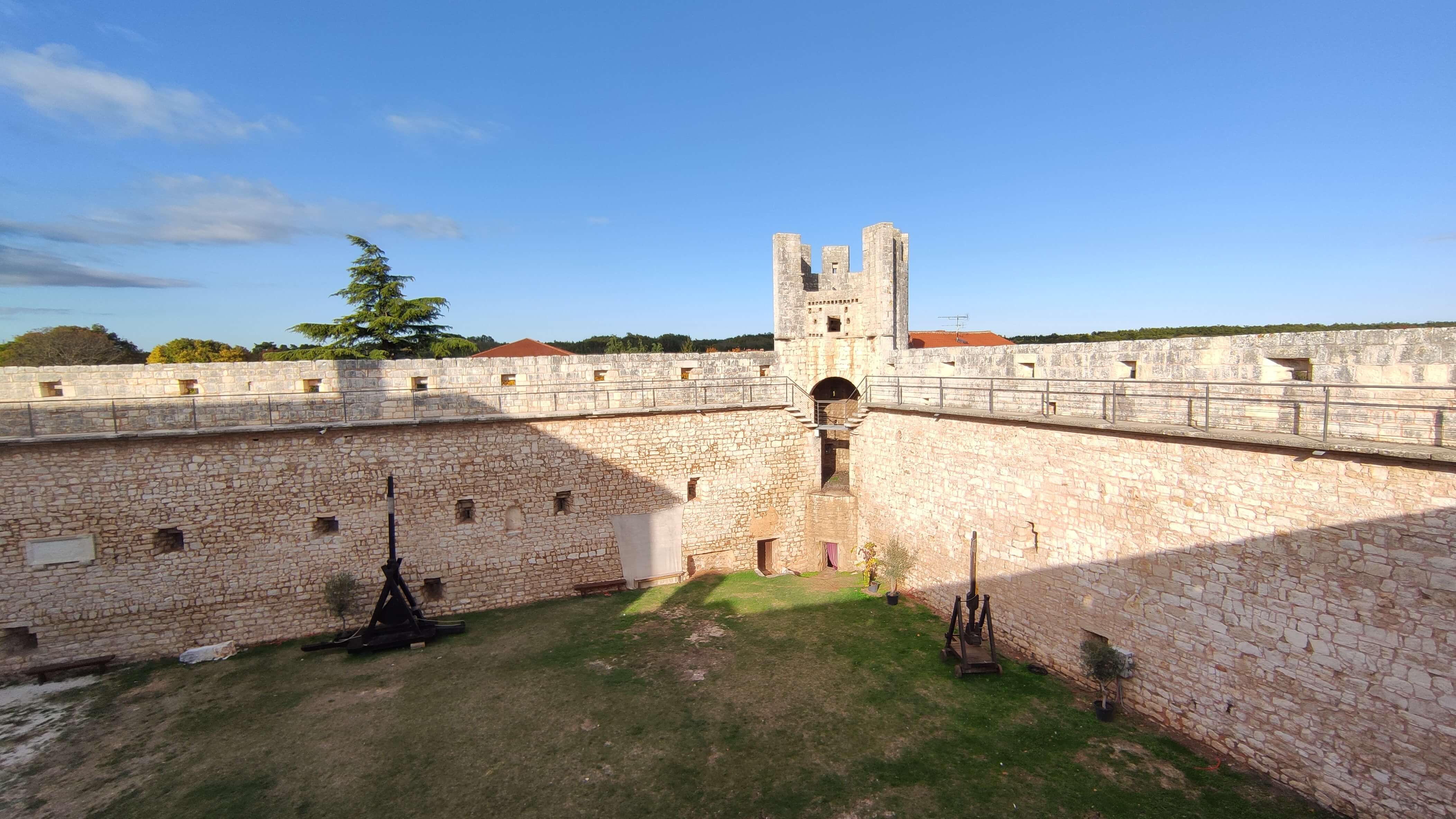
We couldn’t possibly leave without giving this a try. The game starts with a tale of a knight who once won a tournament and left the main prize behind which is now yours to claim. That is, if you solve all the puzzles. They’re based on Istrian legends and scattered around the castle grounds; the game had us scurrying along the fortification walls, exploring a dungeon, three watchtowers and the armoury. We even had a close encounter with the infamous Istrian vampire Jure Grando.
The challenge isn’t too hard to complete and will be enjoyed by all generations, but it’s not absurdly easy either and it will attempt to trick you once or twice. The historical setting is what makes it a one of a kind experience, and it’s also a fantastic way to explore various areas of the castle. The game can be played by up to 35 players at once, split into smaller groups - a nice idea for a teambuilding if you're in the region.
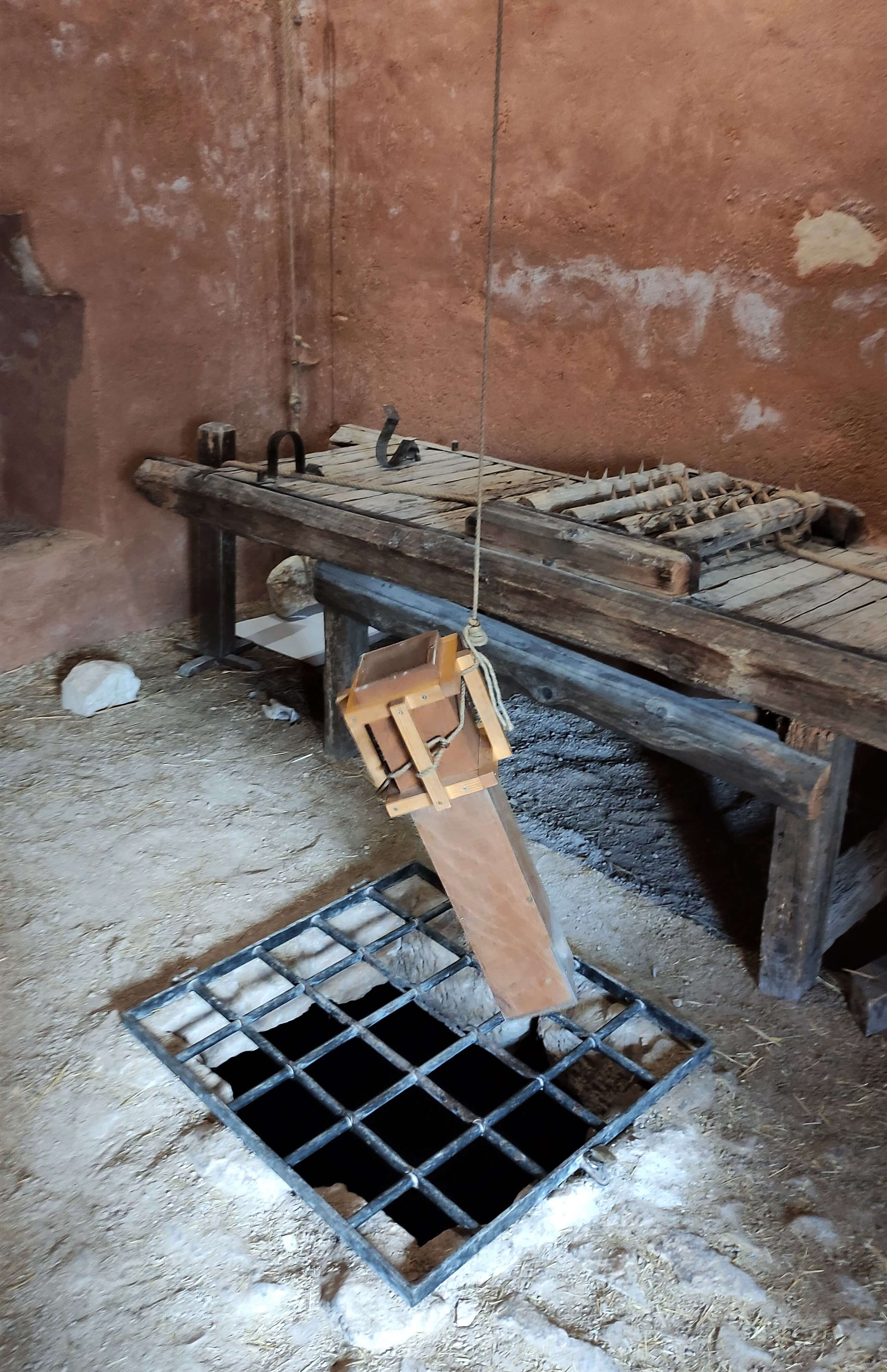
A premium piece of real estate: the torture chamber offers a nice view of the dungeon below.
This game alone gets an A+ for the castlefolk, but we weren’t done yet, as you’ll want to stick around and see more of the place. The five-floor palace nestled in one corner of the castle houses a conference hall, a tasting room and a lovely souvenir shop, among other things.
Our favourite? A superb multimedia exhibition, presenting an overview of the area's history in a refreshingly engaging way. If you’re expecting yet another litany of historical facts or dusty display cases, you’ll be pleasantly surprised.
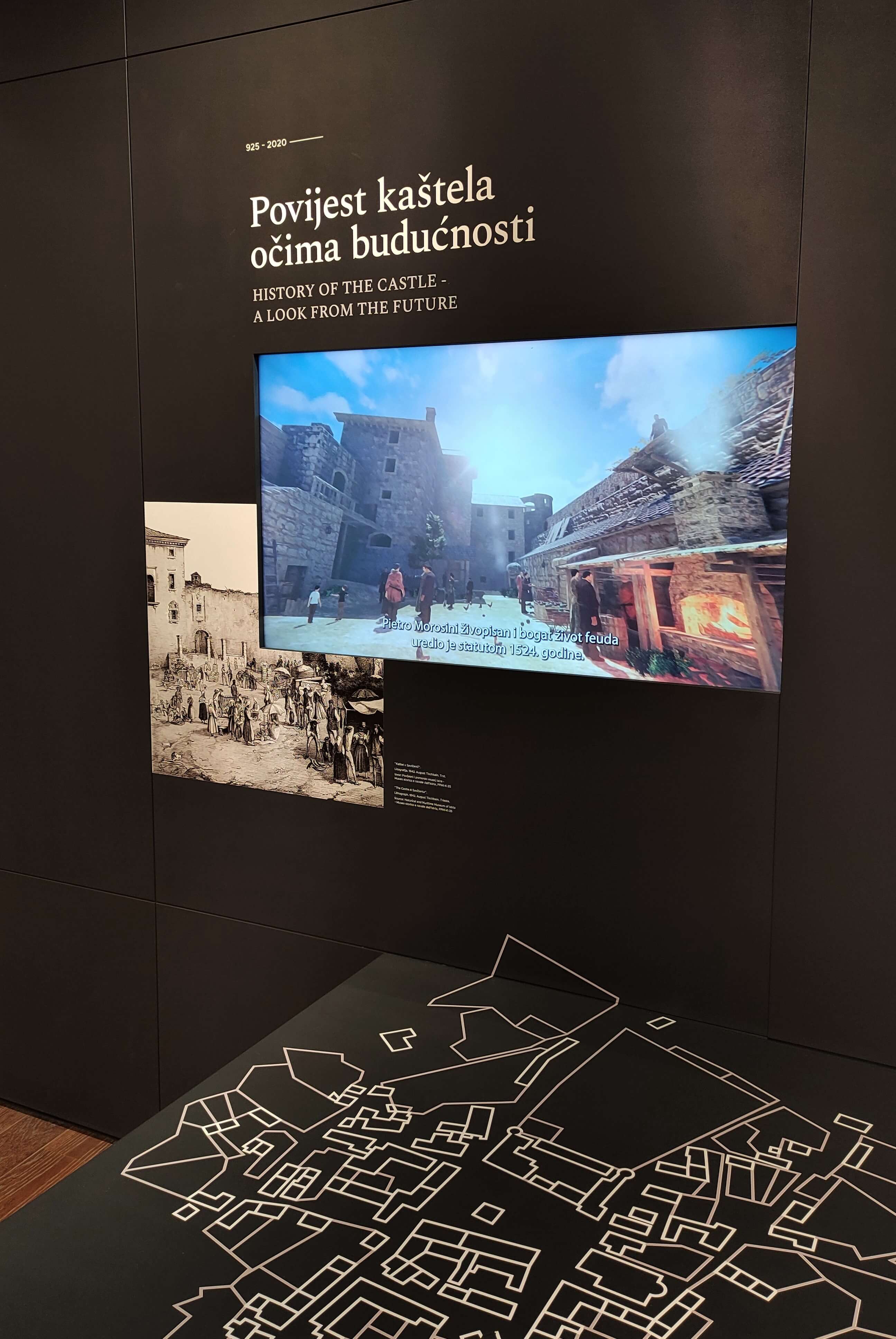
The moment we started looking around, we were hooked. There’s only a handful of exhibits and the display looks deceptively simple when you first walk in, only to find out that the content is incredibly interactive, immersive, easy to use, and most of all, fun. The last three exhibits are literally games.
There’s a VR game that will have you tilting at the ring as a competitor in a traditional chivalrous tournament... While riding a model horse, sort of. (The horse has a name. I found the whole thing hilarious.)
You get to become the lady of the castle for a few moments, sitting on a real throne while discussing daily affairs with your virtual advisor.
There’s a pillar of shame, a virtual forgery to master, and a siege to stop. I won’t get into too many details nor share photos so as not to spoil the experience, but we found it to be an absolute joy. And we learned quite a few bits about history along the way.
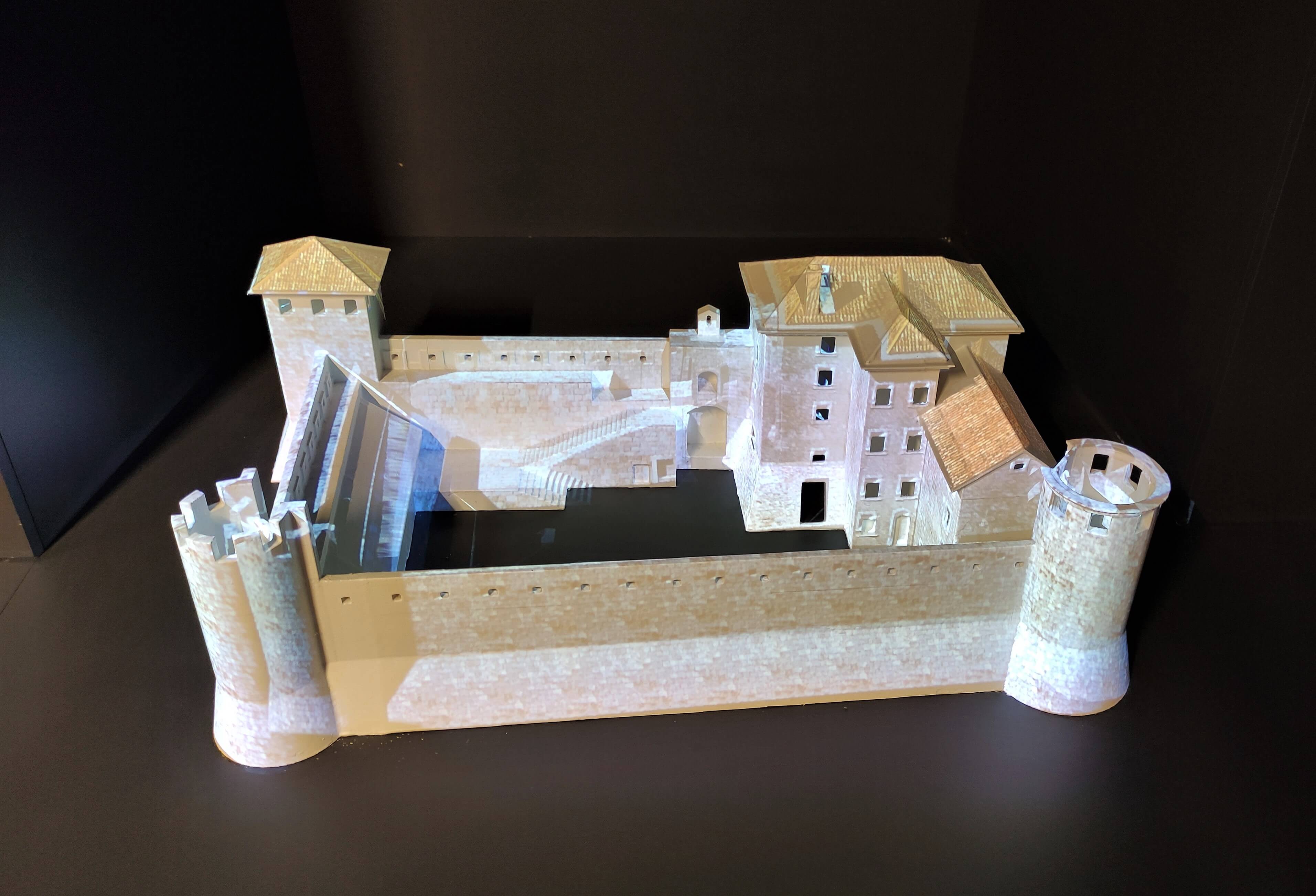
A well thought-out detail at the end rounds up the entire visit: most exhibits are equipped with cameras and if you so decide, you can have a few photos taken as you participate in the activities. When you’re done with the tour, a recap with the pics is sent to your email address. It can be shared on social media or simply kept as a reminder of your visit.
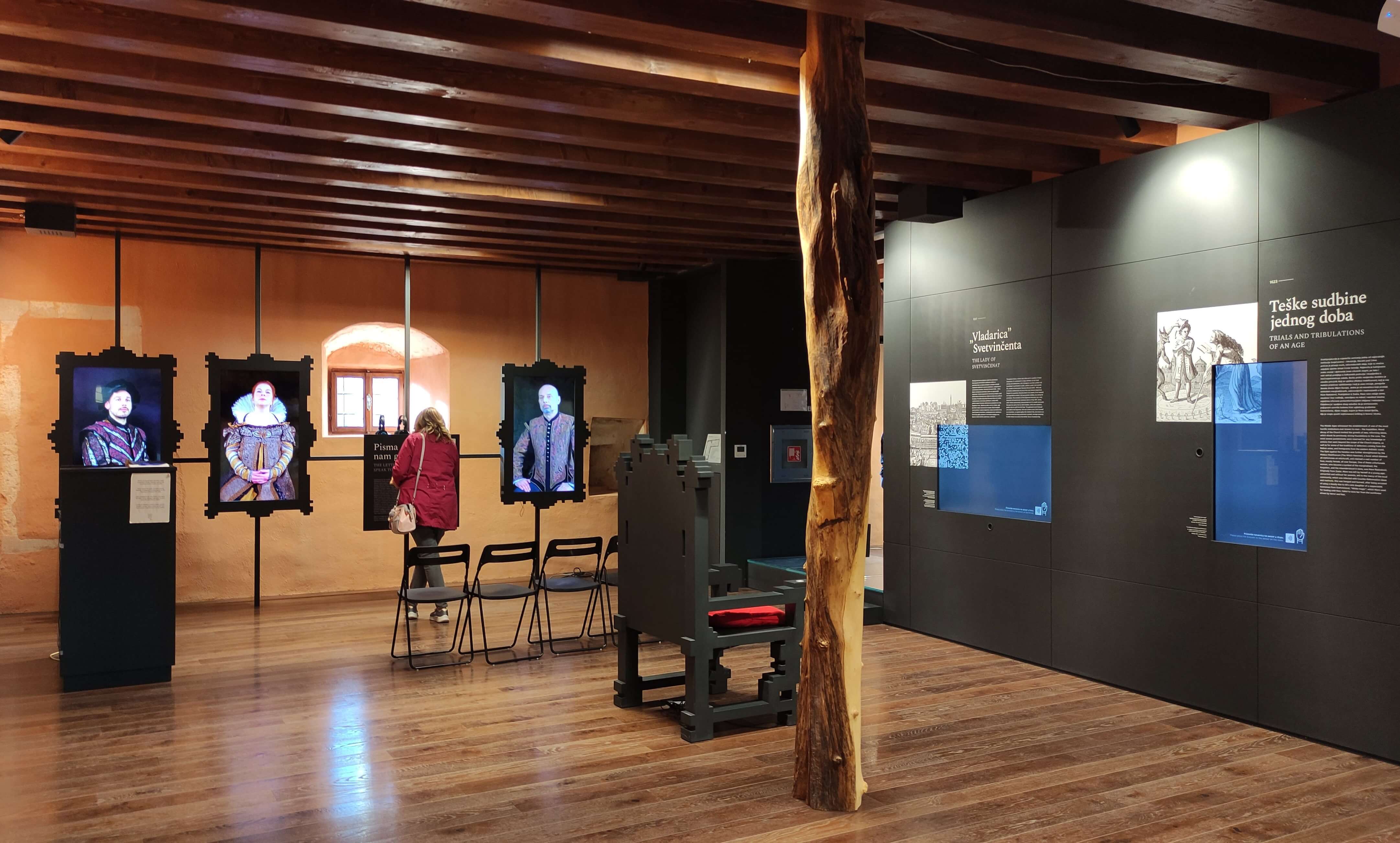
The staff was also very helpful, communicative and kind even though we lost all track of time and had to be gently reminded it was past the closing time.
There’s more to see in Savičenta, both within and beyond the castle walls. There’s the House of the Witch Mare, a visitor centre where the local cultural heritage is presented with the use of modern technologies such as VR, AR and 3D mapping. Or the medieval theme park Sanc. Michael in the nearby village of Rapanji, a great destination for a family trip.
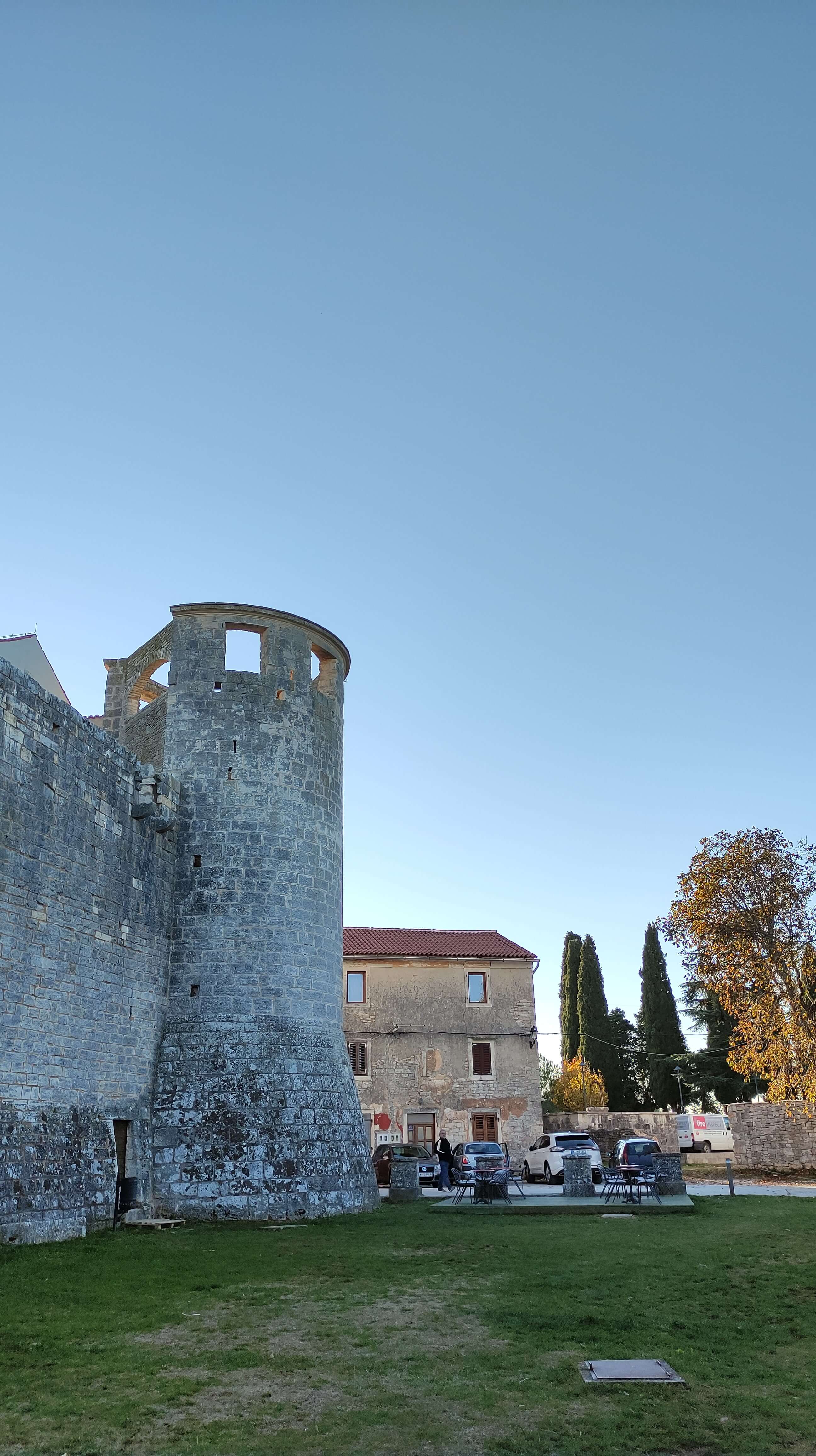
The town is also known for three big annual events: the Dance and Non-Verbal Theatre Festival, the Medieval Festival, and the Cheese Festival. I've since found out that the last one involves this:
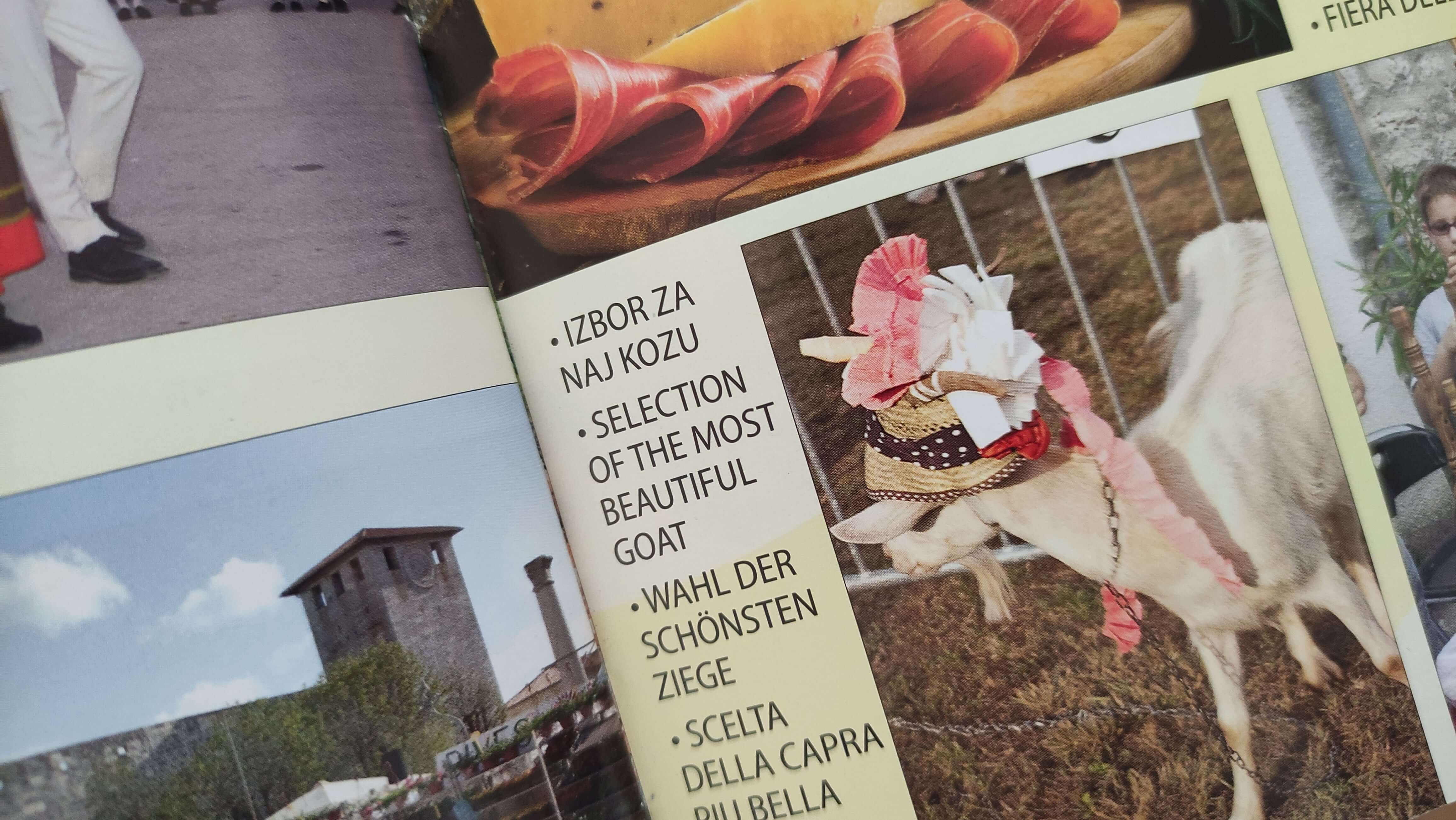
Yes, I'm easily amused and yes, I’m definitely going to the cheese fest next year.
This time around, with only one hour remaining to spare, we headed to the wine festival.
This year’s event saw fifteen renowned Istrian winemakers showcase their first wines of this year’s harvest: Babos, Baćac, Tomaz, Vivoda, Matić, In Sylvis, Černeka, Radanović, Familija Matošević, Marčeta, San Martino, Franc Arman, Sirotić, Fuhtar, and Kalavojna.
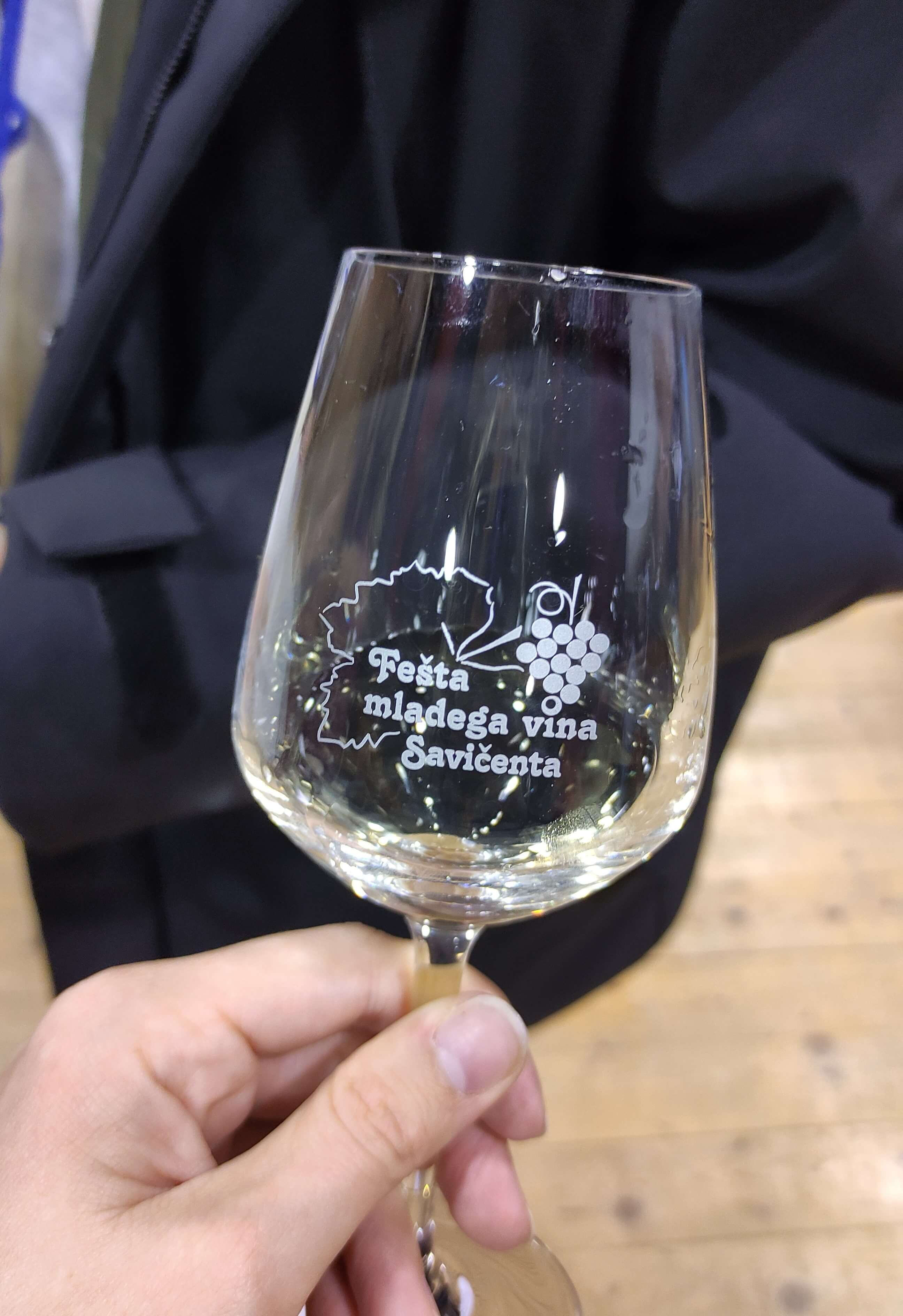
The event aims to promote and position Istrian wine as one of the region’s most recognisable products, writes Glas Istre. It promotes dialogue and cooperation between local winemakers, but also encourages a bit of healthy competition as a means of continuously raising the bar when it comes to quality and promotion of wine in Istria.
Entrance was only allowed with a valid Covid certificate or a negative antigen test result obtained in the last 48 hours. Testing was made available on site at a price of 30 kuna, with results ready in 20 minutes.
The event was well attended, and the venue started to fill up slowly but surely as soon as the doors opened at 5. We purchased our tasting glasses and off we went to sample the offer, stocking up on Istrian prosciutto and cheese along the way. It was a great ending to an overall amazing visit, and a nice example of how to effectively liven up the postseason.
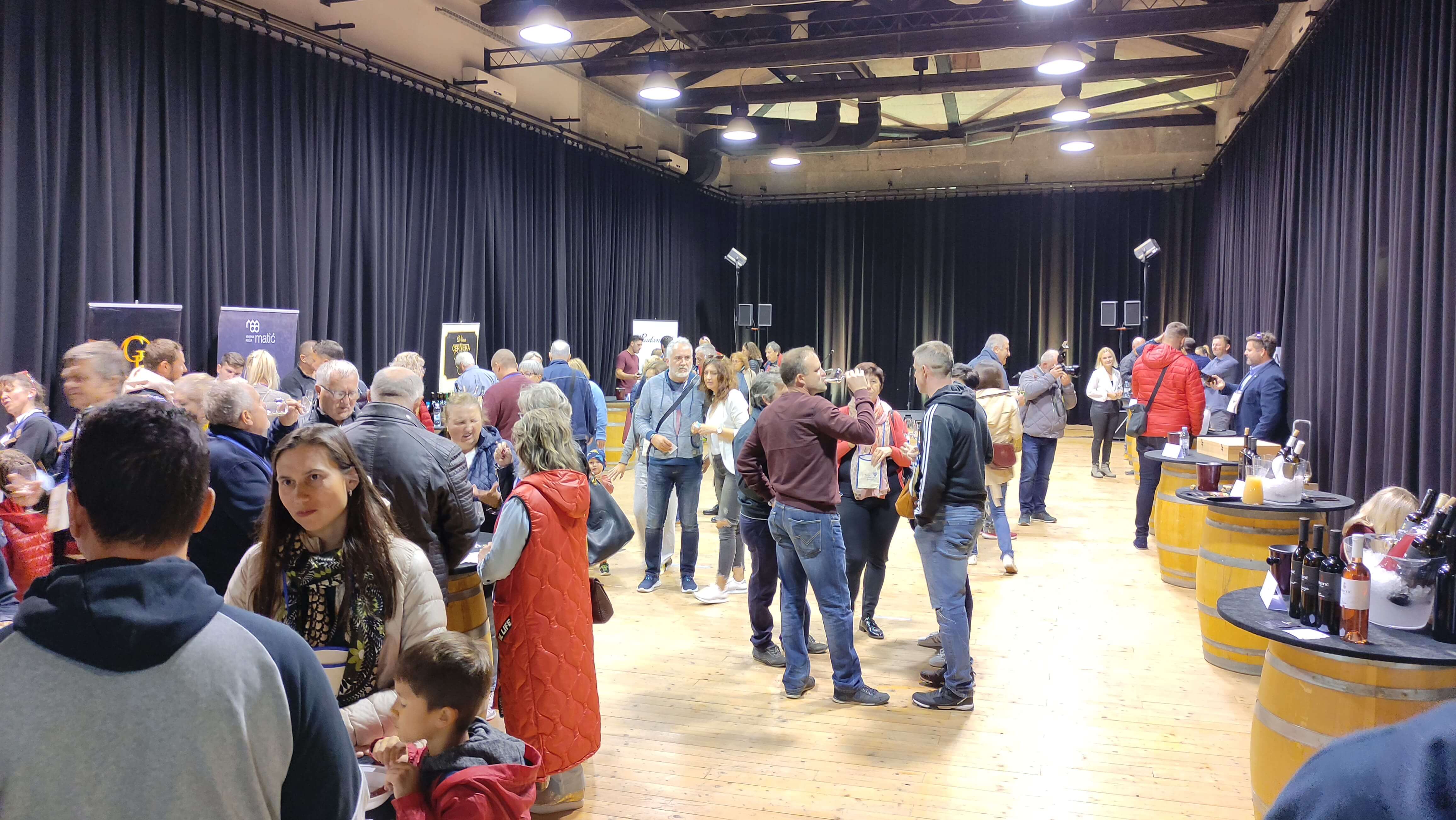
Total time count for our afternoon in Savičenta? Three and a half hours. We’ve seen, done and learned quite a lot in a short time span, and the town has so much more to give. The only thing we regret is not getting there earlier and making it a full day trip, but it’s nice to come across a destination you immediately want to return to.
New Gastronomic Event Celebrates Indigenous Istrian Cuisine
March 7, 2020 - All lovers of traditional Istrian cuisine and indigenous local food will be delighted by a new gastronomic event, which will be held from March 13 to April 12 at taverns in Kanfanar, Svetvincenat and Bale.
"Tradizione a tavola: jela iz pinjate" is a new gourmet story in which the first edition will feature four famous Istrian taverns, Kod Kancelir (Bale), Castello (Svetvincenat), Kononba Klarici (Klarici) and OPG Pekica (Pekici), reports Glas Istre.
The springtime is still an excellent time for exquisite, hearty meals that nourish the palate and invigorate the body, especially if they are made from homemade ingredients. At affordable prices for a three-course menu, the aforementioned taverns will offer all visitors a range of traditionally prepared, warm dishes, as prepared by their grandmothers, and developed by numerous generations of Istrians.
Director of the Svetvincenat Tourist Board Dean Pustijanac said that in tourism, it is always important to present what makes us special and what makes us different from others, and Istria’s rich gastronomic tradition is definitely their comparative advantage. Apart from the fact that it is imperative to pass on the recipes to the younger generations, traditional gastronomy is undoubtedly one of the motives for tourists to visit.
The menu will include, among other things, jota of cabbage and beets, noodles with fennel, salt or truffle, as well as traditional Istrian pastas, pljukanci, fuži, gnocchi and ravioli in various combinations, including pancetta and sheep cheese. In addition to homemade pasta, numerous guests will be able to taste Istrian prosciutto, wild asparagus, wild game or home-grown chicken, and Istrian Boskarin dishes. Local wines from Istrian winemakers will accompany all dishes.
“We were a very big family and we mostly were in agriculture, we had cows and sheep, and there was always a lot of work to do, but we made meals that didn't need to waste a lot of time, and again it was delicious and healthy. That's why a lot of pljukanci was made, and we ate them with grated dried skuta, pancetta, asparagus, and so on. It used to be a poor dish and today it is much appreciated and is available in all taverns and restaurants. The gnocchi was a little more delicate and appreciated, so we made them mostly on Sundays, with chicken sauce and the like,” said Maria Ferlin.
Alica Jelenic added that there were no refrigerators during their childhood, so everything was mostly consumed on the same day, and it was not uncommon for several women to get together to make homemade pasta to feed their larger family. It is these stories, with the demonstration of traditional pasta and dishes, that is a fragile but crucial thread that can bring tourists to Istria and turn them into grateful returning guests.
“This is a unique project that shows where our gastronomy comes from and how it drives tourism development. The mere fact that we have people around us who, in traditional ways, produce homemade food that we then market, is something precious and irreplaceable. I think that lies in the future of our tourism and economy, because it all revolves around our homemade prosciutto and cheese, homemade gnocchi and pljukanci and all other foods. Such manifestations show how tough and innovative our hospitality profession is, how much it nurtures the past because this is our future. Once again, a big thank you to all our daughters who pass on to their younger generations their great and valuable knowledge and love for traditional cuisine that otherwise would disappear in the face of modern culinary tendencies. This is another step where we have to show our big heart and once again prove to ourselves that we can launch an economic boom by basing all our catering on local products. This is the goal, and our tourism must be based on domestic agriculture, and then our guests will support us,” said the President of the Istrian Guild of Caterers at the Chamber of Crafts, Stanislav Briškoski.
The event is the result of the cooperation of the tourist boards of Svetvincenat, Bale and Kanfanar with the tourism company Maistra d.d. and the Rovinj Craftsmen's Association for the development of gourmet products. It is a combination of tradition and top Istrian gastronomy, which by its unquestionable quality, attracts the attention of true gourmet experience fans, continually enriching Istria's offer and putting it on the world gourmet map again, attracting more and more visitors from day to day. However, in all this, local guests should not be forgotten, who also need to be tempted by the quality offer of food and drinks at affordable prices, and that will be provided to them from next Friday.
To read more about lifestyle in Croatia, follow TCN’s dedicated page.
Newly Built Wooden Castle to Open in Svetvinčenat in Istria
Svetvinčenat in Istria is getting another castle after 1034 years
KulTourSpirit: A Project to Revitalize Istrian Heritage
The KulTourSpirit project, which was recently introduced in Pazin, is a joint product of the cities and municipalities of central Istria which aims to integrate and revitalize certain cultural goods to their areas.
17th Festival of Dance and Non-Verbal Theatre in Istria
From July 22 to 25, four unique locations across Svetvinčenat (San Vincenti) in Istria will host choreographers, dancers, artists and performers from all over Europe.


